The Netherlands offers several lessons on organizing agricultural research, education and extension systems to stay competitive and relevant. In this blog, Sreeram Vishnu shares his insights on how the Netherlands is steering innovation in agriculture which other countries could emulate.
CONTEXT
Climate change, food security and sustainability are some of the prominent challenges faced by the farm sector across the globe. Technology is the key to addressing these challenges. And when it comes to innovations and technologies that have spurred agricultural transformation, the Netherlands instantly comes to mind. This tiny European country with a land mass and population of just 1.26% of that of India has plenty to show by way of such innovations.
About 17% of the Netherlands is reclaimed from the sea. Primary agriculture and horticulture account for about two-thirds of the land. Interestingly, half of its land lies below sea level and is protected by dikes to prevent flooding. Yet, the country is one of the world’s largest agricultural producers, exporting €65 billion worth of vegetables, fruit, flowers and dairy products each year. So diverse are the Dutch food and agricultural sectors that they are key partners in global agro-food chains.
This blog provides insights into how the country could achieve this commendable feat, the unique features of its agriculture and how it contributes to the country’s competitiveness in global markets, based on interactions with experts and farmers during a training in the Netherlands (Box 1), supplemented by relevant publications.
UNIQUE STRENGTHS OF THE DUTCH AGRICULTURE SECTOR
The Dutch agriculture sector has six unique strengths:
- The role of green education institutions in developing human resources
- Participatory research involving multi-stakeholders
- Role of growers in steering the research agenda and mobilizing support services
- Novel institutional arrangements and policy support for the green sector
- The pivotal role of Wageningen University & Research (WUR) in driving agricultural research
- Reorganization of agricultural extension and advisory services.
|
Box 1: Training at the Center of Excellence in the Netherlands
The project is being undertaken jointly by the Government of India, through the National Horticulture Mission with technical support from the Government of Netherlands. Kerala Agricultural University (KAU) and the state Department of Agriculture and Farmers Welfare (DoA) are the other local partners in this project. A month-long training on ‘Horticultural Value Chain’ was organized for the members of the partnering institutions in the Netherlands, comprising field visits, visits to international agri-food firms, lectures and hands-on sessions, providing us a deep understanding of how farming in the country works. |
Role of green education institutions in developing human resources
Netherland’s primary sector comprising of agriculture, animal husbandry and fisheries along with food processing, environment and rural affairs is known as the green sector. It is believed that the success of Dutch agriculture largely hinges on the quality of agricultural education, generally known as green education. Green education institutes serve stakeholders ranging from rural farmers, vocational education learners to students of professional graduate courses. Green education is offered at secondary, vocational and higher education levels. Secondary agricultural education (provided by comprehensive secondary schools and agricultural training centers) and higher vocational agricultural education (provided by universities of applied sciences) in the Netherlands are also known for their excellent quality. Research Universities (WO[1]) and Universities of Applied Science (HBO)[2] offer higher education. While the WOs (such as WUR) are focused on advanced research programmes, HBOs provide specific professional education programmes that are more practical oriented. In addition, private organizations like Practical Training Centers (PTC+) complement green education efforts by delivering supplementary and specialist education in specialized areas like horticulture, livestock, etc. Further, agricultural schools from vocational to higher education work closely together with the agriculture industry to make education more demand driven. Thus, this robust green education system not only ensures a supply of actors (researchers, extension officers, growers) with relevant technical skills but also influences the performance of the sector by facilitating the quick uptake of various technologies.
 Wageningen University & Research (Source: Google images)
Wageningen University & Research (Source: Google images)
Participatory research involving multi-stakeholders
Agricultural research in the Netherlands can be traced back to the 1840s when Provisional Agricultural Societies were established for information exchange. Later on, specialized horticultural schools and experimental stations were set up with financial support from the government. Most of them were set up at demonstration farms owned by private growers. Though the experimental stations initially focused on basic farm research such as varietal trials and experiments in plant physiology, the focus shifted to commodity-specific strategic research. The governing body of the experimental stations that sets the research priorities comprised of growers, representatives of Commodity Boards and extension service. A majority of research institutes extended technical support to these experimental stations. The agricultural extension service cooperated closely with the experimental stations, resulting in the well-known association, Education-Extension-Research (EER) triptych[1]. Subsequently, these experimental stations were merged with agricultural research institutes.
In 1957, the National Council for Agricultural Research (NRLO) was established by the Dutch Government by bringing together various stakeholders — knowledge institutions, private firms and NGOs — to prioritize research. Though this body was later dismantled, the involvement of the private sector in agricultural research was ensured through multiple measures such as specific subsidies, opportunities for co-financed programmes and dedicated R&D facilities within the universities. As a result of this cooperation, agricultural research became demand-led, meeting the information and technology needs of various stakeholders like commercial growers and private firms. While fundamental research carried out at WUR was funded by the government, applied research gets support from the private sector as well as the government. This system was instrumental in making agricultural research more demand driven.
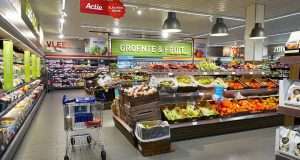 A supermarket in Netherlands – ©Farsana Shamin P
A supermarket in Netherlands – ©Farsana Shamin P
Role of growers in steering research agenda setting and mobilizing support services
It is interesting to note that farmers in the Netherland are actively engaged in organizing advisory and support services, such as demonstration farms in centers of production of horticultural crops and grower-led study groups for knowledge exchange. The experimental stations started in these demonstration farms at a later stage helped commercial growers articulate their field problems through these research units. Besides, growers directly contact universities for technical support. This led to the emergence of applied research centers for potential areas of concern such as flower bulbs and potatoes. Another remarkable feature is the concept of Care Farms that combines agriculture with health and social services. Farmer organizations too played a key role in organizing vocational and adult education in the farm sector and providing support services to farmers, such as inspection services for the quality control of planting materials and the setting up soil and plant and soil analyses laboratories.
The prominence of cooperatives associated with various agricultural commodities is a unique feature of Dutch agriculture. Over the last decade, the consolidation of growers and grower associations into cooperatives became necessary to deal with challenges such as the decline in farmlands and farmers. At present, the market share of agricultural cooperatives is about 70% with their dominant role visible in most farm commodities. The success of these farmer cooperatives is rooted in their ability to adjust to changes in policies, market conditions and technologies. Most importantly, the cooperatives were instrumental in transforming agriculture from a semi-subsistence to commercial system by supplying farm inputs and farm credit and organizing the sale and processing of farm products. In most sectors, the aggregation of grower cooperatives led to the emergence of larger cooperatives with a global outlook.
Novel institutional arrangements and policy support for the green sector
The Netherlands has set up successful institutional mechanisms enabling its agriculture to flourish. In the early 1990s, the practical research centers of the Ministry of Agriculture and the public extension system were privatized and national research funding was gradually phased out. New forms of institutional arrangements were tried out to channel funding for agricultural research and extension (Box 2). For instance, the starting of Green Knowledge Cooperative (GKC) was such a response. This inter-institutional organization connects green education and research institutes with business companies and communities on green knowledge dissemination and utilization (WUR, 2013). Under the GKC initiative, the Green Table is a forum with representatives from various educational institutions who work jointly to maintain a good connect between education and the labour market.
|
Box 2: Innovative institutional platforms in the Dutch green sector Food Valley consortium is a network for innovation and business involving companies, research institutes, experimental facilities, incubators and public-private-partnership-based R&D programs. The focus is on food, health and nutrition. The services offered include coaching by means of connecting early-stage start-ups with experienced companies for advice and support, financing potential entrepreneurs to translate a business opportunity into a business plan, facilitating the infrastructure for product development with reduced fees and providing professional assistance for patenting novel ideas. Along with the WUR, this consortium is engaged in many joint research initiatives co-financed by industries, the government and research institutes to increase the competitiveness of the Dutch economy. Wageningen University & Research offers Academic Consultancy Training (ACT) to promote demand-driven research. Start-ups, companies, government institutions and non-profit organizations can collaborate with Masters students on consultancy projects at relatively low cost and with little investment. A group of five to seven students from various disciplinary backgrounds can use their academic knowledge, skills and creativity to find a solution to a real-world problem. An example of this can be found at https://youtu.be/rd_v7cNcCaQ. Another interesting example is the Education-counter through which an external party can contact the university to ask practical questions which are then translated into assignments in relevant courses. |
Within the broader domain of agriculture, every sub-sector has grower representative firms to promote innovation and global trade. For instance, the Dutch Federation of Agriculture and Horticulture with more than 35,000 agricultural entrepreneurs and employers represents their interests at the local, regional, national and international levels. Other examples include the Netherlands Crop Farming Union, Netherlands Poultry Farmers Union and European Multi-functional Farmers’ Network.
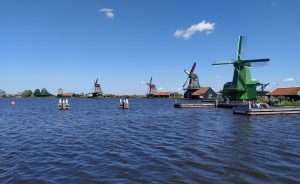 Windmills at Zaanse Schans, Netherlands – © Sreeram V
Windmills at Zaanse Schans, Netherlands – © Sreeram V
The green sector also draws policy support to strengthen research by partnering with private players. Policy measures like the Top Sector policy framework (2011) (topsector enbeleid) bolstered this collaboration since it supported cooperation between knowledge institutions, businesses and government. The organizations representing key sectors (such as agriculture and food) are eligible to receive incentives like a Public Private Partnership Grant by entering into joint projects with private companies. To operationalize these projects, Top Sector Consortia for Knowledge and Innovation (TKI) were formed to facilitate the developing of innovation contracts (innovatie contracten) with the government in order to develop innovative concepts and products. These developments led to industry-driven research, public-private partnerships and networking at the sub-sector and regional levels, and illustrate the changing view on knowledge management in the green sector. Further, there are policy measures to support growers financially. The Green Direct Payment is provided for adhering to sustainable production practices while the Young Farmer Payment is a financial incentive for promoting more youth engagement in agriculture.
Pivotal role of WUR in driving agricultural research
Wageningen University & Research is a global center of excellence in agricultural science. The varsity is involved in both fundamental and applied research and has more than 10,000 students from over 100 countries and 6500 staff working in diverse areas of food and environment for the Dutch Government and business community at large. The famous Wageningen Approach is all about closer collaboration of natural, technological and social sciences to translate scientific breakthroughs quickly into education and practice. Interestingly, the university receives funding both from the government as well as from other parties including private industries and global institutions. This ensures a shared stake in the research programmes carried out by the university by these parties and making it demand led. In addition to its own applied research programmes, WUR also attracts private firms to its campus for research collaborations. The formation of the foundation Food Valley within its campus was such an attempt. The move led to the flow of investment and R&D activities of agro-industries within Wageningen and the necessary laboratory facilities of the university offered back in return. Today, WUR is in the forefront of research in the cutting-edge areas of agricultural science, including the application of robotics and data-driven farming, nature inclusive transitions, climate neutral agriculture, etc.
Reorganization of agricultural extension and advisory services
The Research-Education-Extension triptych which successfully transformed the Dutch agri-sector was privatized since 1990s. This led to changes such as the organization of extension and advisory services and funding mechanisms and service providers. The government extension machinery has metamorphosed into commercial consultancy firms to provide technical and advisory services to growers. However, most of the extension agents could not offer client-oriented services and were gradually replaced by other actors. This led to the emergence of new players like private consultants and agrochemical companies who offered agro-advisory services. As a result, knowledge became a market product that needs to be purchased and services were commercialized. Systematic financing of the experimental farms by the grower associations disappeared and it became more contract based, subject to competition. Agencies like Innovation Networks and Transforum were formed to facilitate networking and knowledge dissemination among multi-stakeholders in the farm sector. Most notably, under the new regime, the role of growers became much more diversified from mere beneficiaries to clients, sponsors and stakeholders with regard to knowledge generation and dissemination.
CONCLUSION
There are many other factors that contributed to the robust development of Dutch agriculture, such as its strategic geographic location, well-connected transport network, stable weather and flat land areas that are well suited for farming, among others. However, the Netherlands’ resounding success in modernizing agriculture with a sustainable outlook is unparalleled. If there is a key word to describe Dutch agriculture, it should be technological excellence, credited to a range of factors such as the continuous pursuit of innovation, collaboration among a network of actors including private firms and entrepreneurs and the dynamic role of grower associations in securing/offering various services. These factors are reinforced with a futuristic policy perspective which is regularly revised and updated. The Dutch have done away with viewing knowledge as a public good and instead embrace the concept of a knowledge market. Each grower accepts and undertakes the responsibility to invest in the production of technical knowledge and services necessary for their enterprise. Similarly, other factors for such a transition, such as partnerships, forms of institutions and modes of funding and knowledge generation are redefined or repurposed. In short, the Dutch case is a great example to follow for any country in the world aspiring to become an agri-super power.
ENDNOTE
This blog covered only a few notable features of the Netherlands’ farm sector, mainly focusing on the diversity of actors, systems to stimulate innovation, governance mechanisms and organization of extension systems. How the Dutch experimented to make deliberate changes in organizing agricultural research, education and extension systems with the changing times to stay competitive and relevant is worth emulating. So is their ability to develop an enabling environment to stimulate innovation, partnerships and knowledge production at various levels. It also demonstrates the growing significance of private extension systems and the role of growers in organizing them.
FOR ADDITIONAL READING
Bijman, J. (2016). Agricultural Cooperatives in the Netherlands: key success factors. International Summit of Cooperatives. https://core.ac.uk/download/pdf/79188675.pdf
Government of Netherlands. (2022). Agriculture and Horticulture. https://www.government.nl/topics/agriculture/agriculture-and-horticulture
Jan, H. & Philip ter Burg. (2020). Agricultural law in The Netherlands: overview. Agricultural law in The Netherlands: overview, Practical Law Country Q&A 1-603-8746
Jongen, W. M. (2006). Food for innovation: The food valley experience. NABC. https://ecommons.cornell.edu/bitstream/handle/1813/51234/nabc18_17_Jongen.pdf?sequence=1&isAllowed=y
Katz, E. & Barandun, A. (2002). Innovative Approaches to Financing Extension for Agriculture and Natural Resource Management. LBL Swiss Center for Agricultural Extension, Lindau.
Kupper, H., Laurentzen, R. & Mulder, M. (2012). Recent policy developments in green education in The Netherlands. The Journal of Agricultural Education and Extension, 18(2), 121-139.
Langeveld, J. W. A. & Proost, J. (2004). Participative Learning for the Future: using interactive farmer-research networks in the development of new plant production systems in The Netherlands. In Pre-proceedings of the sixth European Symposium on Farming and Rural Systems Research and Extension, Vila Real, Portugal, 3-8 April, 2004 (pp. 537-548).
Leeuwis, C. & Aarts, N. (2011). Rethinking communication in innovation processes: creating space for change in complex systems. Journal of agricultural education and extension, 17(1), 21-36.
Mulder, M. & Biemans, H. J. (2018). Agricultural education in the Netherlands: from crystallizing to dissolving?. The Journal of Agricultural Education and Extension, 24(1), 1-5.
OECD. (2015). Innovation, Agricultural Productivity and Sustainability in the Netherlands, OECD Food and Agricultural Reviews, OECD Publishing, Paris. http://dx.doi.org/10.1787/9789264238473-en
Spiertz, J. H. J. & Kropff, M. J. (2011). Adaptation of knowledge systems to changes in agriculture and society: The case of the Netherlands. NJAS-Wageningen journal of life sciences, 58(1-2), 1-10.
Verhoeff, K., Mollema, C. & Rabbinge, R. (2007). Agricultural Science in The Netherlands. Book Chapter No.17. In Loebenstein, G., & Thottappilly, G. (Eds.). (2007). Agricultural Research Management. Dordrecht: Springer.
Wageningen University & Research (WUR). (2013). Green Knowledge Cooperation. https://www.wur.nl/en/project/Green-knowledge-cooperation.htm
Wielinga, E., Dijkshoorn, M. & Sol, J. (2010). In search of structural innovations in the Dutch green knowledge system. In Darnhofer, I. and M. Grötzer (eds.): Building sustainable rural futures: the added value of systems approaches in times of change and uncertainty; proceedings of the 9th European IFSA Symposium, 4-7 July 2010 in Vienna, Austria. Vienna (University of Natural Resources and Applied Life Science (pp. 96-105).
Footnotes:
[1] wetenschappelijk onderwijs
[2] hoger beroepsonderwijs
[3] A triptych is a work of art that is divided into three sections, or three carved panels that are hinged together and can be folded shut or displayed open.

Sreeram Vishnu is an Assistant Professor (Agricultural Extension) at Kerala Agricultural University. He can be reached at sreeram.vishnu@kau.in

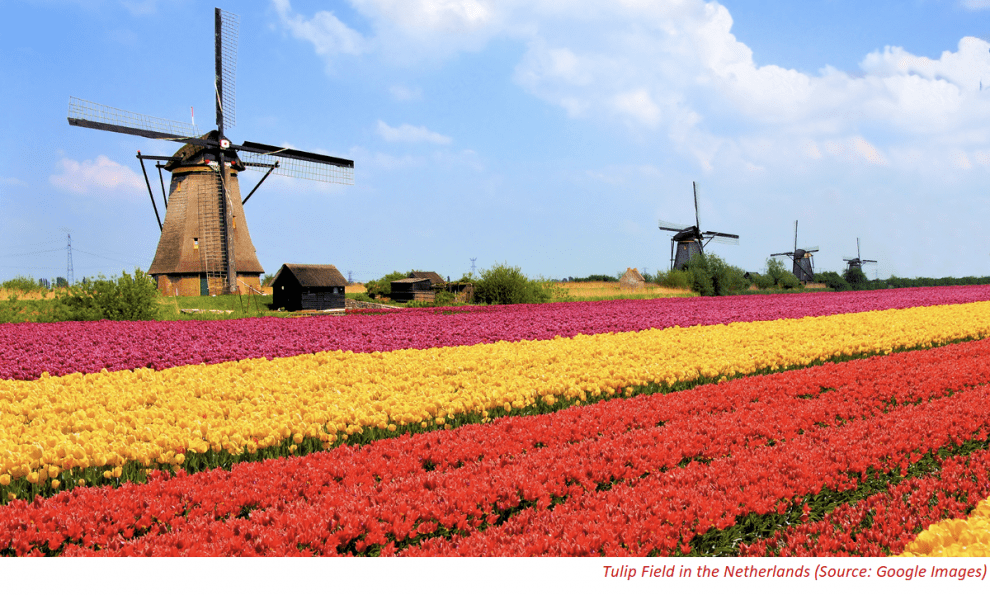
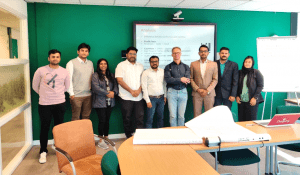

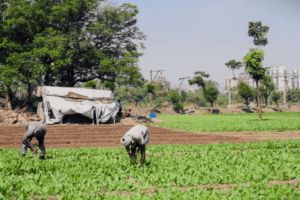

The blog was a refreshing read of integration of policies and implementation with purposeful and innovative approaches. The key seems to be with the visionary and futuristic adoption of changes in line with farmer demands as well. Would like to know how the extension system ( both extension research and field advisory) empowered themselves for this successful social business model, which can serve as lessons for developing countries. Is it crop based, integrating business, technology and market avenues? Thanks for the references given for additional read. Again AESA brought out an excellent blog . Kudos to Sriram Vishnu also